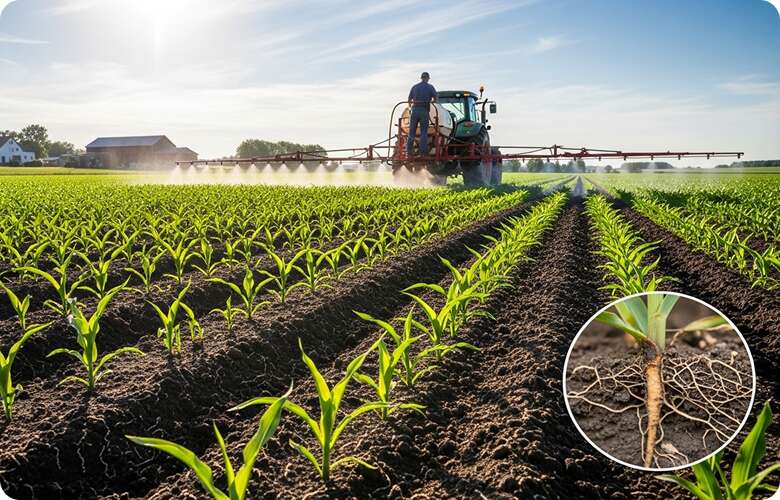
Discover how bio-stimulants and fertilizers work together to improve crop yields, strengthen soil health, and support sustainable farming.
In modern agriculture, both bio-stimulants and fertilizers play an important but different role. While fertilizers provide the primary nutrients required for plant growth, bio-stimulants enhance the plant’s ability to use those nutrients effectively. When they are used together, they create a powerful combination that improves crop productivity, maintains soil fertility, and promotes sustainable agriculture.

Bio-stimulants are natural substances or microorganisms that enhance plant growth, nutrient uptake, and stress tolerance. Unlike fertilizers, they do not directly provide nutrients but instead improve plant physiology and soil health.
Examples of bio-stimulants include:
These inputs are widely used to improve the plant's biological functions and help crops grow under stress conditions.
Fertilizers are the primary suppliers of essential plant nutrients. They deliver:
Fertilizers directly support photosynthesis, growth, and reproduction, so they are a must to increase agricultural productivity.
Bio-stimulants enhance root systems, allowing plants to absorb more nutrients. For example, mycorrhizal fungi create a symbiotic relationship with roots, spreading their surface area for nutrient absorption.
Fertilizers can lose their effect due to leaching, volatilization, or soil fixation. Humic acids and other bio-stimulants improve soil structure and nutrient retention, making fertilizers more efficient.
Bio-stimulants help plants handle stresses like drought, salinity, and heat by improving water retention and antioxidant activity. This reduces nutrient wastage under extreme conditions.
Inputs like amino acids and seaweed extracts speed up enzymatic activity and energy production, so crops can utilize fertilizers more effectively.
Substances such as humic acids improve microbial activity and long-term soil fertility, creating a healthier environment for nutrient availability.
Both fertilizers and bio-stimulants are important for today’s agriculture. Fertilizers supply essential nutrients, while bio-stimulants help plants absorb and use those nutrients more effectively. Together, they support higher yields, reduced input costs, better soil health, and sustainable farming practices. This mix shows the future of productive and environmentally responsible agriculture.
.jpg)